Chin Augmentation in Taiwan
Search and Compare the Best Clinics and Doctors at the Lowest Prices for Chin Augmentation in Taiwan

Find the best clinics for Chin Augmentation in Taiwan
No pricing info available
Singapore offers the best prices Worldwide
Price: $ 70
Chicing Plastic Surgery Clinic, located in Taipei City, Taipei, Taiwan offers patients Chin Augmentation procedures among its total of 12 available procedures, across 1 different specialties. Currently, there's no pricing information for Chin Augmentation procedures at Chicing Plastic Surgery Clinic, as all prices are available on request only. All procedures and treatments are undertaken by just a small team of specialists, with 3 in total at the Clinic, and they are not accredited by any recognized accreditations institutes
- Home
- Taiwan
Compare Before & After Photos of _procedure_photos.phpChin Augmentation


Front view
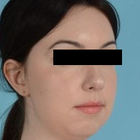
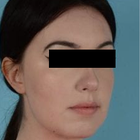
Half-side view
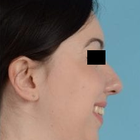
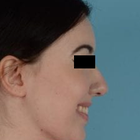
Full-side view
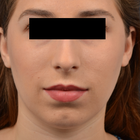

Front view
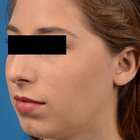

Half-side view
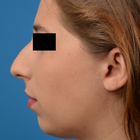
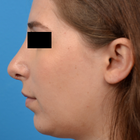
Full-side view
WHY US?
At Medijump, we're making medical easy. You can search, compare, discuss, and book your medical all in one place. We open the door to the best medical providers worldwide, saving you time and energy along the way, and it's all for FREE, no hidden fees, and no price markups guaranteed. So what are you waiting for?

Free

Best Price

Widest Selection

Risk-Free
What you need to know about Chin Augmentation in Taiwan
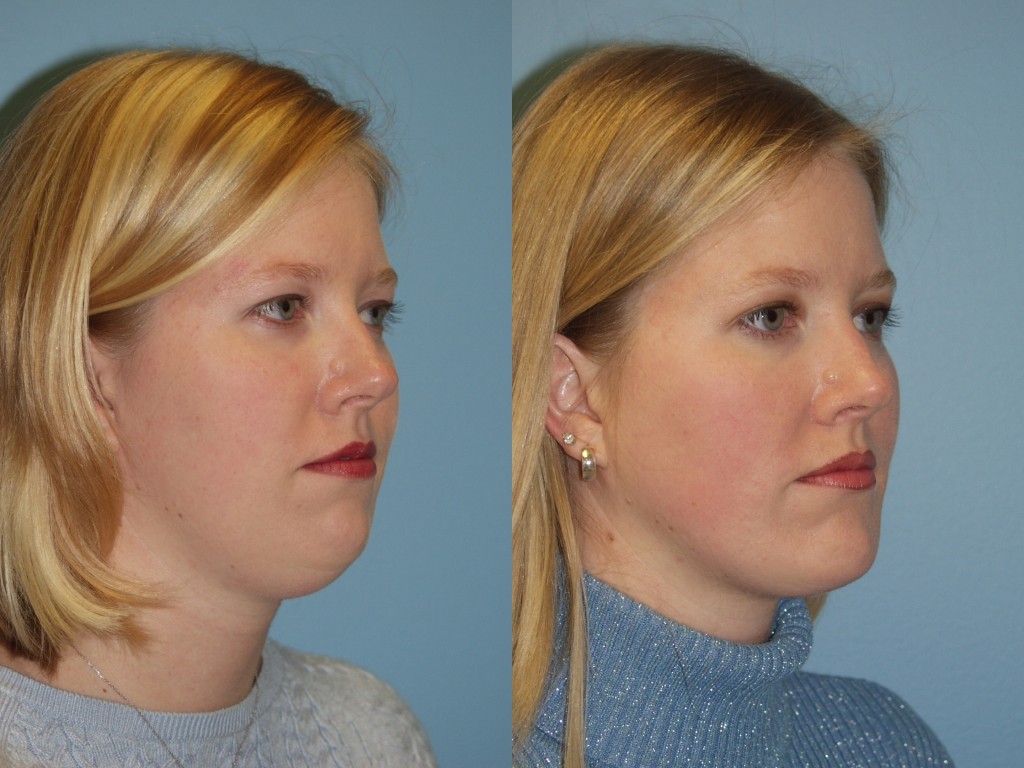
Chin augmentation is a type of genioplasty or mentoplasty (chin surgery). It is a cosmetic surgery done to balance your lower face by altering the soft tissue, skeletal, and dental parts of your face. This type of cosmetic surgery is perfect for both men and women who think that their chins are not shaped proportionally to the rest of their face. The procedure is normally performed at the same time as rhinoplasty or facial liposuction.
There are two key features to a balanced facial profile, your nose and your chin. The chin is an essential feature of your appearance and if it is understated, it will make your facial profile uneven. Typically, a strong and broad chin is considered attractive to men. While a more delicate and narrow chin is appealing to women. However, whether you are a man or a woman, if you are not happy with how your chin looks you may choose to have cosmetic surgery to aid your appearance.
A chin augmentation procedure is usually done to contour your chin and make it:
- More prominent
- Broader in size
- Rounder or more angular
- Project more
- Reduce the appearance of double chin caused by a small chin bone
What is the cost of Chin Augmentation in Taiwan?
Variances in the price of a Chin Augmentation in Taiwan may emerge due to multiple influences. Elements that can influence the cost include practitioner expertise, geographical positioning of the service, anaesthetic costs, medical center charges, and the price of post-operative wear and medication. Some medical facilities even offer bundled services encompassing the procedure, recuperation, and follow-up care expenses. Ensuring all prospective costs are eluded during consultation can help avoid surprise bills. Explore healthcare insurance options and payment plans designated for patients that could potentially lessen the financial burden of the procedure.
By opting for a Chin Augmentation in Taiwan, patients are making a valuable investment in their self-worth and physical appearance. While the financial dimension is a crucial consideration, it shouldn't be the sole deciding factor. Giving precedence to the qualifications of the doctor, the standard of care, and safety measures can help ensure long-lasting and gratifying results. Call a local clinic to get more details on costs.
What does a Chin Augmentation Procedure Involve?
Chin Augmentation can be performed via two types of procedure:
- Chin implants - for chin enlargements, to reshape or push forward your chin’s appearance.
- Sliding genioplasty or Osseous genioplasty (Chin reduction) - this type of approach is for those who aim to have a less prominent jaw appearance.
Good candidates for this type of surgical cosmetic procedure should:
- Be in good health
- Have reasonable and realistic expectations about the outcome of the surgery
- Should not suffer from cardiac problems or hypertension
If you undergo a chin reduction, during your cosmetic treatment procedure:
- You will most likely be under general anesthesia
- An incision will be done inside your mouth along with your lower gum. This will give your surgeon access to your chin bone.
- A bone saw or chisel will be used to make a second cut through your jaw bone. Your jaw bone will then be moved and wired or screwed in place.
- Sutures will be used to close the incision and bandage will also be applied. Since the cut was made inside your mouth, scars will not be visible.
- The procedure will approximately take one to three hours.
As for chin implants, during your cosmetic treatment procedure:
- You may opt for general anesthesia or you may also choose to go under local anesthesia with sedation.
- An incision can be made inside your mouth or outside, under your chin. A pocket will be created under your chin bone and under your muscles. The implant will then be placed inside.
- Your surgeon may use your bone, fat tissue or an implant made out of silicone.
- Your implant will be attached to your bones with stitches or screws.
- Sutures will be used to close your surgical cut. If the cut was made inside your mouth, the scar will barely be seen.
How Long Should I Stay in Taiwan for a Chin Augmentation Procedure?
After your Chin Augmentation in Taiwan, your surgeon will recommend a duration of stay for close monitoring and follow-up visits. The duration of your stay typically depends on the specifics of your procedure, your overall health, and the speed of your recovery. If the procedure is uncomplicated, you may be able to leave the hospital on the same day. However, a stay of around 2 to 4 days may be recommended for post-surgery observation and initial recovery. Your surgeon will provide guidelines for activity restrictions, dietary modifications and incision care during this period.
Most patients plan to stay in Taiwan for approximately 1 to 2 weeks after the procedure for regular check-ups and to ensure optimal healing. After returning home, you may be asked to restrict strenuous activity for a few weeks under the supervision of your local healthcare provider. Remember, your journey to wellness involves commitment to the full recovery process.
What's the Recovery Time for Chin Augmentation Procedures in Taiwan?
Recovering from a Chin Augmentation is a several-week process, starting with initial discomfort and swelling, managed by painkillers, elevation, and cold compresses. By week two, major swelling subsides, revealing preliminary results. Adherence to a nutritious diet, avoiding strenuous activities, and following the doctor's post-op instructions are crucial for a smooth recovery. The full effect of the procedure should be visible within 1 to 3 months, noting individual recovery times may vary.
What sort of Aftercare is Required for Chin Augmentation Procedures in Taiwan?
Post-operative care is a crucial component in ensuring the fruition of a Chin Augmentation in Taiwan. Upon returning home, directives may include continued use of prescribed medications, application of healing ointments, and the upkeep of cleanliness and dryness at the surgical site. Regular consultations with your healthcare practitioner guarantees appropriate healing and the prompt identification of any impending complications. A detailed recovery blueprint may also encompass guidance on implementing positive lifestyle habits and stress mitigation strategies.
You might be necessitated to wear a chin strap for around a week to facilitate the tissues adjusting to their modified structure. In the ensuing weeks, it'd be important to limit physically demanding activities to prevent harm to the operated area. It's imperative to discuss any uncertainties related to post-operative care instructions and restrictions with your healthcare practitioner for ensuring an uneventful recovery.
What's the Success Rate of Chin Augmentation Procedures in Taiwan?
Success rates for Chin Augmentation in Taiwan are high with many satisfied patients, however, procedure nature, practitioner expertise, patient health, and post-op care adherence are critical for success. Research highlights boosts in self-esteem and life quality post procedure, though risk evaluations and outcome potentials demands a thorough healthcare provider consultation.
Ultimate success of Chin Augmentation doesn't rely only on surgical proficiency, but also on sufficient aftercare, realistic result expectations, regular check-ins, balanced diet, frequent exercise, and adequate skincare habits, all enhancing result longevity and overall well-being.
Are there Alternatives to Chin Augmentation Procedures in Taiwan?
The most common reason for having a chin enhancement is usually to correct a recessive or weak chin. While a lot of people would actually prefer to have their facial features enhanced, not all are open to going under the knife to achieve a more appealing appearance.
Today, there are some non-surgical alternatives to cosmetic surgeries, as for chin augmentation procedure, one alternative is:
Chin fillers - small amounts of hyaluronic will be injected into your chin and cheeks to help define your jawline, giving you a strong chin. Chin fillers have a minimal recovery period and the procedure will not take long as compared to the surgery. However, the result is only temporary. It mostly only lasts between nine to twelve months, so if you want to maintain your well-defined chin, you have to go for a repeat session.
What Should You Expect Before and After the Procedure
Prior to the procedure, a detailed consultation with your healthcare provider is anticipated, involving an examination of your medical history and required tests to verify your appropriateness for the Chin Augmentation. The practitioner will elucidate the steps of the procedure, deliberate over your aesthetic objectives, and shape your expectations realistically. You'll be informed about the possible risks, complications, and the anesthesia that will be employed.
Post-procedure, anticipate some mild discomfort, swelling, and bruising, which will gradually diminish over a few days. Comprehensive post-op directives will be provided by your healthcare provider to expedite healing and limit potential complications. Ensuring adherence to the guidelines and regular communication with your healthcare practitioner can enhance your recovery process and results. A positive mindset, patience, and dedication to recovery significantly contributes to procedural success and overall well-being.
What are the Potential Risks of undergoing Chin Augmentation?
Patient reviews often highlight that their Chin augmentation has boosted their self-image and self-confidence. However, like any other surgeries, chin augmentation also poses some risks and complications. Although these instances are very rare, it is also important to be aware of them:
- Infections
- Nerve damage that may cause mouth or lip numbness
- Exposure to screws
- Extrusion of implants
- Allergic reaction to implants
Whilst the information presented here has been accurately sourced and verified by a medical professional for its accuracy, it is still advised to consult with your doctor before pursuing a medical treatment at one of the listed medical providers
No Time?
Tell us what you're looking for and we'll reachout to the top clinics all at once
Enquire Now

Popular Procedures in Taiwan
Prices Start From $16

Prices Start From $1,945

Prices Start From $672

Prices Start From $432

Prices Start From $101

Prices Start From $5

Recommended Medical Centers in Taiwan for Chin Augmentation

- Interpreter services
- Translation service
- Religious facilities
- Medical records transfer
- Medical travel insurance
- Health insurance coordination
- TV in the room
- Safe in the room
- Phone in the room
- Private rooms for patients available

- Interpreter services
- Translation service
- Religious facilities
- Medical records transfer
- Medical travel insurance
- Health insurance coordination
- TV in the room
- Safe in the room
- Phone in the room
- Private rooms for patients available

- Interpreter services
- Translation service
- Religious facilities
- Medical records transfer
- Medical travel insurance
- Health insurance coordination
- TV in the room
- Safe in the room
- Phone in the room
- Private rooms for patients available

- Interpreter services
- Translation service
- Religious facilities
- Medical records transfer
- Medical travel insurance
- Health insurance coordination
- TV in the room
- Safe in the room
- Phone in the room
- Private rooms for patients available

- Interpreter services
- Translation service
- Religious facilities
- Medical records transfer
- Medical travel insurance
- Health insurance coordination
- TV in the room
- Safe in the room
- Phone in the room
- Private rooms for patients available
Chin Augmentation in and around Taiwan
About Taiwan
Whilst still a part of the Republic of China, the small island of Taiwan maintains a wealth of ancient Chinese culture and traditions mixed with modern-day Western inspirations. With its food-loving locals and award-winning whiskeys, Taiwan is a land of surprises. With 14 JCI accredited facilities in Taiwan, Taipei, the capital, is home to most, many of which are part of the University Hospitals and offer a range of specialist tertiary care. The country welcomes an ever-increasing number of medical tourists each year, many of which travel for Chin Augmentation procedures. Medical Tourists mostly travel from the mainland or from within the region.
Popular parts of Taiwan
Taiwan is one of the most densely populated countries in the world with 23.5 million inhabitants. The country has amazed tourists with its dynamic cities, vibrant culture, interesting history, and incredible natural scenery.
- Taipei is the capital of Taiwan. It is the financial, political, and cultural center of the country. The city is influenced by Chinese culture as well as Japanese, Southeast Asian, and American. There are many things to enjoy in this city, such as delicious food in Rahoe Night Market, enjoy a bird’s eye view of Taipei from Taipei 101 Observatory, visit the incredible Chiang Kai-shek Memorial Hall, and be inspired by the city’s many museums.
- Kaohsiung is Taiwan’s largest port. It’s an urban city that embraces its cultural venues. The most popular tourist destination is the Lotus Pond, a beautiful artificial lake filled with lotus plants and surrounded by temples. Tourists can also visit Pier-2 Art Center, see the Dome of Light, explore Cijin Island, or visit the Fo Guang Shan Monastery.
- Tainan, as the oldest city in Taiwan, has a fascinating culture and history. For historical sights, tourists can visit the Anping Fort, Anping Tree House, or learn Taiwanese embroidery. The city is now filled with quaint cafes tucked within the alleys.
- Hualien has breathtaking natural beauty. It’s the perfect place for tourists who want to get away from busy cosmopolitan cities. Visit the Eternal Spring Shrine, check out the popular Taroko Gorge, fall in love with Qingshui Cliffs, hike the Shakadang trail, and eat the amazing food.
- Taichung is a lively city located in the west-central part of the island. Taichung offers many unique things to see and do. National Taichung Theater will leave tourists in awe by its beautiful architecture. National Taiwan Museum of Fine Arts, Rainbow Village, Gomei Wetlands, Miyahara, and Fengjia Night Market are among the most popular tourist attractions.
Weather and Climate in Taiwan
- Spring starts in March and lasts until May. The average temperature is between 18°C and 24°C. Early rain showers and thunderstorms begin in this season. Heavy rainfall hit the island around mid-May.
- Summer can get extremely hot and humid with an average temperature of 27°C to 30°C. The season starts from June to August. Summer is also the wet season and typhoons are a real possibility especially in July and August. This is the peak season for tourism.
- Autumn has pleasant weather conditions. The rains decrease and the heat will drop. The season starts from September to November with an average temperature of 21°C to 27°C.
- Wintertime is from December to February and it is the coolest and driest season of the country. The average temperature drops to 16°C - 18°C.
Getting Around in Taiwan
Taiwan Taoyuan International Airport is the main airport in the country, located about 40km west of Taipei in the Dayuan District, Taoyuan. It is the hub for 6 airlines including two of Taiwan’s major airlines, China Airlines, and EVA Air. It has international connections with almost every country in the world. The airport serves major airlines as well as budget airlines such as Air Asia, Eastar Jet, Air Busan, and Tiger air Taiwan. There are other airports that serve international and domestic flights such as Taichung Airport, Tainan Airport, Siaogang Airport, and Taipei Songshan Airport.
Tourists arriving at Taiwan Taoyuan International Airport have a variety of transport options such as buses, taxis, car rentals, and Taoyuan Airport MRT. Buses are the cheapest option to get to the city center. Tourists who head towards the Taipei 101 area should take Bus no. 1960, while bus no. 1819 and 1961 will take tourists near Taipei Main Train Station.
Taxis are available in Terminal 1 and Terminal 2’ arrivals lobby. The fare is based on a meter and will usually cost around 1,200 TWD (40.50 USD). A journey to the city center takes about 50 minutes and taxis operate for 24 hours.
Taoyuan Airport MRT is the fastest way to reach Taipei’s city center. It will take tourists to Taipei Main Station in 35 minutes and costs 160 TWD (5.40 USD). The MRT operates from 6.05 am to 11.35 pm.
Tourists can travel around Taiwan by normal train (TRA). It is an affordable option; a train ride from Taipei to Kaohsiung costs around 845 TWD. Tourists who need a quicker travel time can opt for Taiwan High-Speed Train (HSR). The train travels from Taipei to Kaohsiung in just 90 minutes.
The cheapest way to travel around Taiwan is by bus. Buses are readily available and will reach small villages and mountain resorts. The country provides Taiwan Tourist Shuttle bus system that offers 42 routes to more than 100 tourist destinations.
Taxis and MRT is the best way to travel around big cities. In Kaohsiung, getting around in a bicycle is the best way to explore as it is one of the most bicycle-friendly cities in Taiwan.
Tourist Visas in Taiwan
Citizens of 65 countries do not require a visa to visit Taiwan and can stay for up to 90 days. Nationals of Turkey can obtain a visa on arrival valid for 30 days. It is best to check to the nearest embassy or consulate for visa requirements. Since January 2016, Taiwan offers an eVisa program for 18 countries including Saudi Arabia, Peru, Oman, and United Arab Emirates.
Additional Information
- Local Currency: The local currency is the New Taiwanese Dollar (TWD). 1 USD converts to 31.98 TWD.
- Money & Payments: ATMs are widely available except in villages. They’re usually located in convenience stores and banks. Credit cards are accepted in hotels and top-end restaurants. Always carry cash because small stalls and night market joints only accept cash. Tipping is not mandatory but is still appreciated.
- Local Language: The national language is Hakka, Mandarin, Taiwanese Hokkien, Matsu, Formosan languages, and sign language. English is common, especially in the tourism area. English is spoken more in Taipei.
- Local Culture and Religion: Taiwan has diverse religious beliefs. Buddhism and Taoism are two of the biggest religion in the country followed by Christianity, Yiguandao, Tiandism, Miledadao, Zailiism, and Xuanyuanism.
- Public Holidays: Taiwan celebrates Chinese New Year for a week in February. The country hosts several festivals such as Lantern Festival in February, Dragon Boat Festival in June, and Mid-Autumn Festival in September.
Popular Searches
- Plastic Surgery in Thailand
- Dental Implants in Thailand
- Hair Transplant in Thailand
- Breast Augmentation Thailand
- Gastric Sleeve in Thailand
- Gender Reassignment Surgery in Thailand
- Laser Hair Removal in Bangkok
- Botox in Bangkok
- Dermatology in Bangkok
- Breast Augmentation in Bangkok
- Coolsculpting in Bangkok
- Veneers in Turkey
- Hair Transplant in Turkey
- Rhinoplasty in Turkey
- Stem Cell Therapy in Mexico
- Rhinoplasty in Mexico
- Liposuction in Mexico
- Coolsculpting in Tijuana
- Rhinoplasty in Korea
- Scar Removal in Korea
- Gastric Sleeve in Turkey
- Bone Marrow Transplant in India
- Invisalign in Malaysia
- Plastic Surgery in the Dominican Republic
- Tummy Tuck in the Dominican Republic
- Plastic and Cosmetic Surgery in Poland
- Rhinoplasty in Poland
- Hair Implant in Poland
- Dental Implants in Poland
- IVF in Turkey
